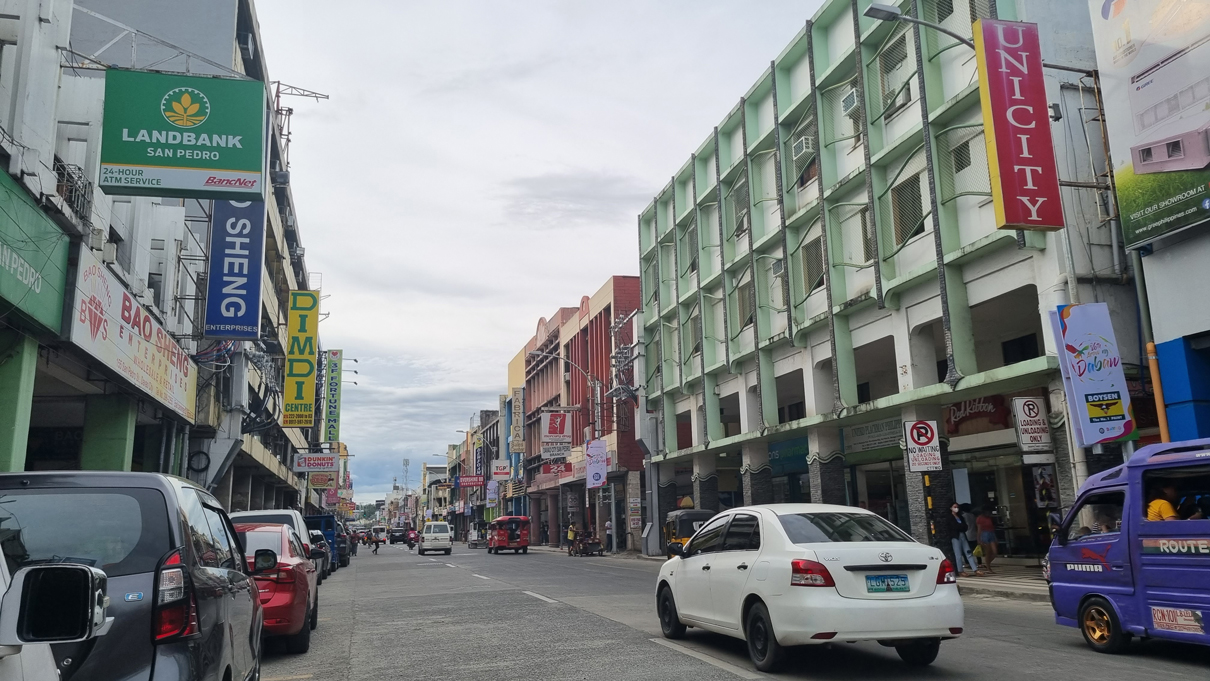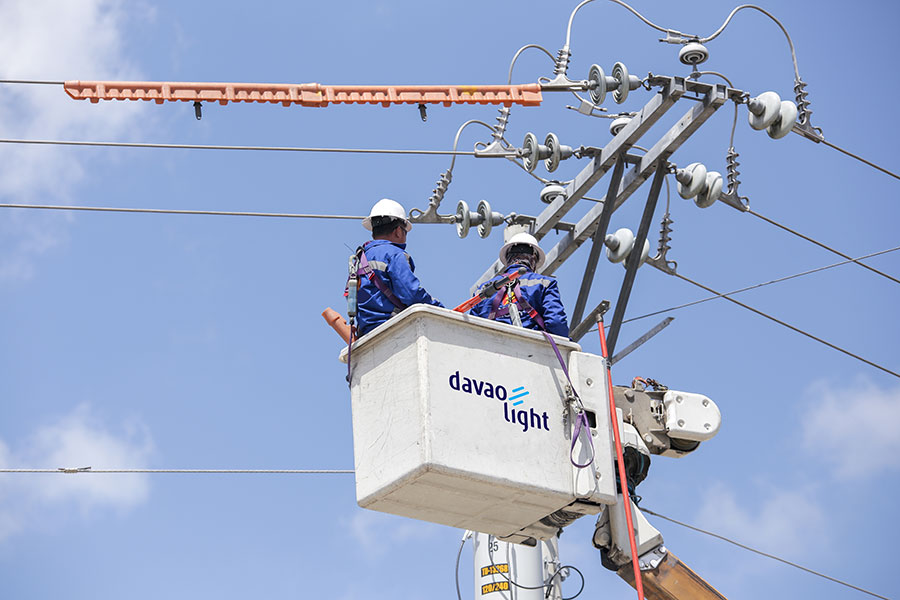Jesse Pizarro Boga, born and raised in Davao City, is a firsthand witness of pre- and post-underground cabling in the King City of the South.
"Underground cabling brings a feeling of order to the often busy and chaotic downtown street. It gives residents some kind of assurance that service and service provider lines are organized and will be resilient even on challenging days,” Jesse said.
A writer by trade, Jesse lives in C.M. Recto Street, one of the first areas covered by the city’s Underground Cabling Project.
Earlier this year, the local government unit (LGU) of Davao City, with Aboitiz Power Corporation (AboitizPower) distribution utility subsidiary Davao Light & Power Company, Inc. (Davao Light) and project partners from telecommunications, cable, and internet companies, completed the second phase of the initiative.
Underground cabling, which is a rarity in the Philippines, harnesses innovation to maximize the health, safety, and economic development of businesses and communities.
“Infrastructure development is one of our key priorities for the city, and this project will pave the way for more sustainable development around the Central Business District,” Davao City Mayor Sebastian “Baste” Z. Duterte said in a statement.
“Having our wires and cables underground will not only enhance the city’s skyline, it will also make our streets safer for motorists and commuters, stabilize power and telecommunications services, and make the city more appealing to tourists and investors,” he added.
The first phase covered C.M. Recto Street from corner San Pedro Street to corner Ramon Magsaysay Avenue, while the second phase comprised 0.6 kilometers of San Pedro street from City Hall Drive up to corner Quirino Avenue. The former began construction in 2018 and was finished in 2021 with the removal of power lines, distribution transformers, and 64 poles. Meanwhile, the latter started in March 2021 and was completed on February 19, 2023 with the removal of its overhead lines and 50 poles.
President of the Davao City Chamber of Commerce and Industry Inc. John Carlo B. Tria thinks business conditions will further improve as overhead wires will no longer be visually distractive and physically hazardous.
"I think the underground cabling project will enable a safer and more pleasant business environment especially for the establishments in the area,” Tria shared.
With the absence of unruly overhead wires and invasive poles, visual improvement is more apparent and walkways become more spacious. Power pilferage, or electricity theft, is also prevented.

Another long-term impact of underground cabling is the lesser incidence of emergency power interruptions, as well as the mitigation of fire hazards, accidents, and safety risks, since electric wires are now placed underground. This will improve customer service and strengthen the resilience and reliability of Davao Light’s power distribution network.
“We don't have to worry about disruptions caused [by] cable damage during extreme weather situations,” Jesse explained. “And there's some beauty in it — the kind that makes city life more liveable.”
The first part of phase three in R. Magsaysay Avenue, covering the Philippine Post Office up to the corner of Suazo street, is still ongoing at 51% overall completion, and is expected to be completed by the first quarter of next year.
Other streets down the pipeline subject to underground cabling are C. Bangoy Street, Pelayo Street, Bonifacio Street, and Quirino Avenue.
Necessity: The mother of invention
Davao Light engineers innovated a prefabricated manhole that lessens the construction and installation process of manholes from four to six weeks to just 48 hours, reducing the time consumed by road closures caused by the construction.
“The prefabricated manhole is Davao Light’s innovation to minimize public inconvenience and [the cost and timeframe] of the project implementation,” the project lead of Davao Light for the R. Magsaysay Avenue area, Engr. Leo Remulta, previously said.
Construction work occurs at night to mitigate the possibility of causing heavy traffic in the concerned areas.
“We construct the manhole, where the primary lines will go through, in a separate, controlled area and then deliver them to the site for construction to make the process considerably faster,” Remulta added, underscoring AboitizPower’s belief of how innovation is key to a sustainable, reliable, and efficient energy solutions provider.
The Underground Cabling Project, which is the first and only project of its kind in Mindanao, was directed under City Ordinance No. 0152-17, Series of 2017, requiring all telecommunication companies, Davao Light, and all other persons involved to convert overhead lines to an underground system.
“The LGU has hoped for this, but if not for the willingness of Davao Light, this would not be possible. To all the utilities involved and who cooperated with Davao Light, thank you for your effort in making this city look cleaner and safer for the people,” Duterte said in the vernacular.
Authorities from the LGUs of Butuan and Bataan visited Davao City to inspect the recently completed underground cabling in San Pedro Street. Davao Light and the City Engineering Office led the site tour on March 23, 2023. In the same month, the Department of Public Works and Highways (DPWH) - National Capital Region also visited in preparation for pilot feasibility studies on implementing underground cabling in EDSA and Katipunan Avenue Extension.

“This project is a new addition to the many things that other LGUs visit [Davao] city for, for benchmarking purposes,” Duterte said. “We shall continue to support other localities that intend to adopt the project in their respective cities and municipalities.”
This is the second iteration of underground cabling in Davao City, with the first being implemented in 2016 around Davao City Hall and Sangguniang Panlungsod in compliance with City Ordinance No. 0177-14, Series of 2014. The Visayan Electric Company Inc., the country’s second largest distribution utility, is also conducting its own underground cabling initiative in Cebu City in Visayas.
“I like to appreciate underground cabling as a way to the future because it allows residents in neighborhoods and communities to feel organized and secure about the services that they access,” Jesse pondered.



